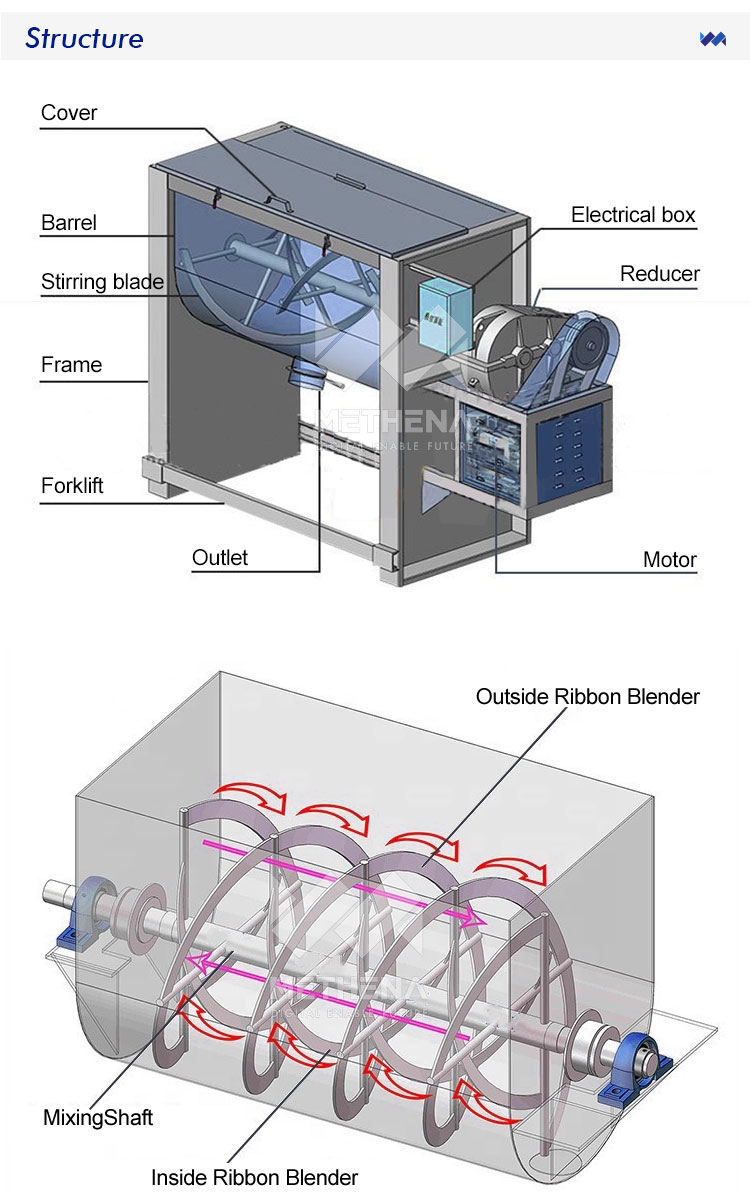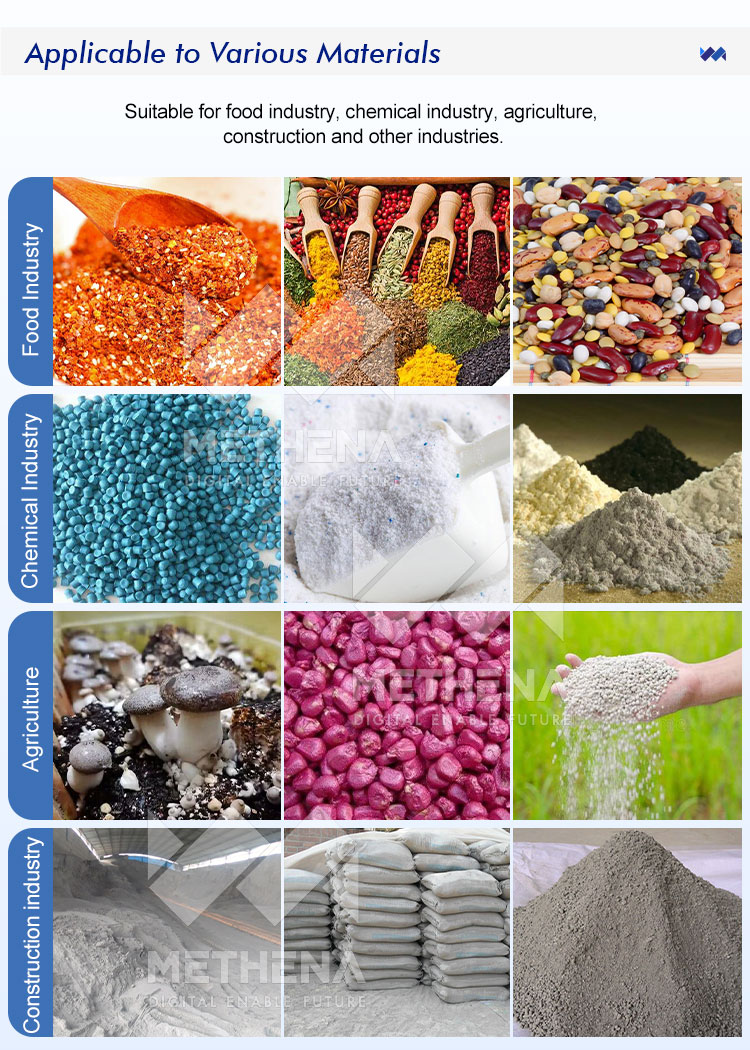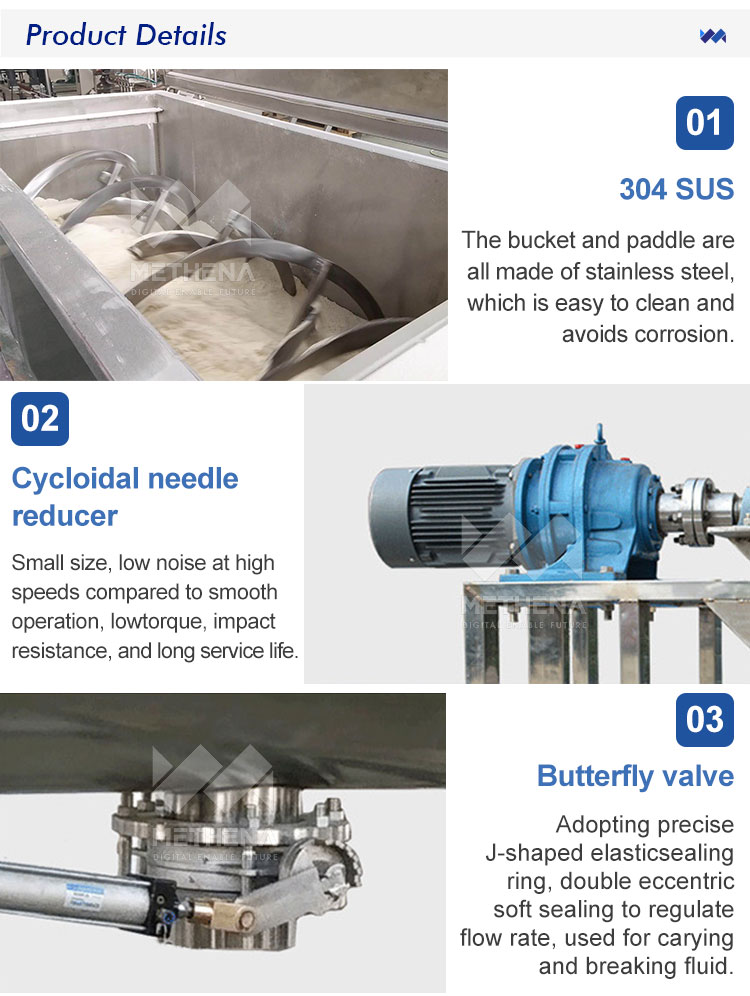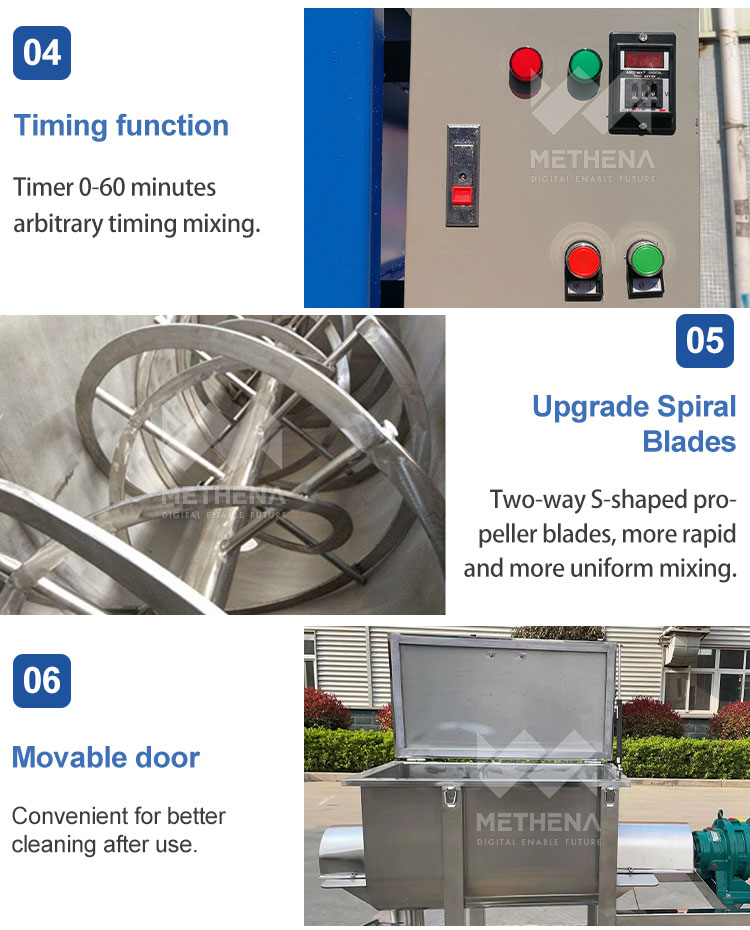Author: Methena / Release Time: 2025-01-09 / Pageviews:
A horizontal mixer is an industrial mixing device composed of a mixing barrel, paddles, motor, and other components. The motor drives the mixing paddles to rotate, causing the materials to roll and collide, achieving uniform mixing to meet the production process requirements for material homogeneity.
During operation, the motor drives the reducer, which rotates the mixing paddles at a set speed. Materials enter the mixing barrel through the feed inlet, and the paddles push the materials along the circumference of the barrel, forming a convective mixing motion. At the same time, the shear force from the paddles breaks down and refines the materials, achieving shear mixing. The molecular diffusion also promotes the even distribution of materials. Multiple mechanisms work together to cycle and mix the materials repeatedly until the desired uniformity is achieved, at which point they are discharged from the outlet.

Horizontal mixers have a wide range of uses. In the construction industry, they are used to mix cement, sand and gravel to prepare concrete; in the food industry, they can evenly mix flour, sugar and other ingredients to make cakes and sauces; in the chemical industry, they can mix Chemical raw materials to produce coatings, detergents, etc.; in agriculture, they are used to mix feed to ensure balanced nutritional intake for livestock, helping various industries to produce efficiently.

Determine Mixing Requirements: The mixer’s capacity and mixing speed parameters.
Select the Appropriate Model and Specifications: Choose the right mixer model based on the characteristics and processing needs of the materials.
Equipment Quality and Brand: Choose a reputable brand with good quality
Understand After-Sales Service and Technical Support: Confirm with the manufacturer regarding ongoing after-sales service and technical support.
Before operating, ensure you wear safety gear, such as helmets, protective gloves, and goggles, to prevent injury from splashing materials or mechanical collisions. When adding dry powders, dust can irritate the eyes, and goggles help protect your eyes; during cleaning or maintenance, helmets can protect against falling objects.
Never approach or insert anything into moving parts, such as the mixing paddles or drive chain, while the equipment is running. Even if the machine stops briefly, ensure the equipment is stable, the power is cut off, and check or clean only after the paddles have stopped moving to avoid accidental start-up or injury from inertia.
Conduct regular comprehensive checks of the horizontal mixer, focusing on electrical grounding for leakage prevention, and ensuring that protective barriers and covers are secure. Repair any loose parts promptly to avoid accidents or exposure to high-speed components, ensuring a safe working environment.


Basic Operating Process of the Horizontal Mixer
Preparation Before Operation:
Choose a flat, dry, well-ventilated location with sufficient space. Carefully inspect the horizontal mixer to ensure there are no damages, deformations, or loose connections, and that the electrical system is free from leakage risks. Weigh materials using an electronic scale according to the production formula to ensure accurate proportions, then pre-treat the materials as necessary, such as drying moist materials or crushing large lumps for smooth mixing.
Starting the Machine:
Switch on the main power, control cabinet, and motor switch in sequence, ensuring the indicator lights confirm normal power supply. When starting the motor, listen for unusual sounds, vibrations, or smells; stop the machine immediately to check if any issues occur. If preheating is necessary, follow the manual’s instructions for 5-10 minutes, observing the equipment to ensure stable operation.
Feeding Materials:
Choose the appropriate feeding method based on material properties and production scale. For small batches or special materials, feed manually and slowly to avoid blockages; for large-scale production, use automated feeding with conveyors or other devices, controlling speed and quantity for continuous, precise feeding. Avoid material piling, bridging, or overloading by carefully controlling the speed and quantity of input.
Mixing Process Control:
Set mixing time and speed according to material properties, formulas, and experience. For sticky materials, increase mixing time and reduce speed, while for easy-to-mix materials, reduce mixing time and increase speed. Enter parameters into the control panel and start mixing. The operator should observe the mixing process through the observation window to ensure uniform rolling, no clumping, or layering. In case of any anomalies, make adjustments or stop for inspection.
Discharge Operation:
A few minutes before the end of mixing, stop feeding materials to allow the remaining materials to mix thoroughly for an even discharge. After mixing, turn off the motor, control cabinet, and main power switch in sequence. Choose the discharge method based on material characteristics and process requirements: for free-flowing materials, use gravity for discharge; for sticky materials, use a screw conveyor; for large mixers, discharge by tilting the barrel to ensure smooth discharge without residue.
Post-Operation Cleaning and Maintenance:
After mixing, immediately clean the mixing barrel, feed inlet, discharge outlet, and surrounding areas with a spatula, broom, or high-pressure water gun to prevent materials from hardening and affecting future use. Also, check for any wear or deformation of the mixing paddles, looseness of drive components, or electrical system abnormalities. Record any issues and arrange for maintenance.
Clean the mixing barrel, feed inlet, and discharge outlet after each use to prevent materials from hardening, which could affect future operations.
Regularly clean the entire device to remove dust and oil stains, keeping it looking clean.
Component Maintenance:
Inspect and replace the mixing paddles as necessary to extend their lifespan.
Perform regular checks on drive components (e.g., belt tension, chain lubrication) to prevent breakdowns.
Check seals and replace them periodically to maintain proper sealing performance.
Lubrication Management:
Establish a detailed lubrication plan, specifying the lubrication points and types of grease/oil.
Follow proper lubrication procedures to avoid over-lubrication or insufficient lubrication.
The horizontal mixer is essential for beginners as it helps them grasp basic industrial mixing operations, understand the device structure and working principles, and develop a safety-conscious approach to operation, laying a solid foundation for future work in this field. However, special attention must be paid to safety during operation.